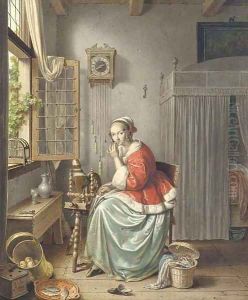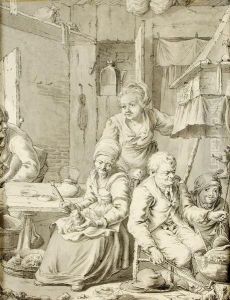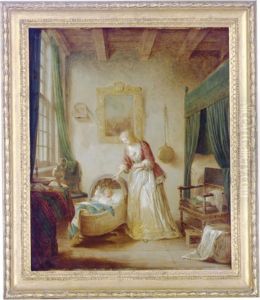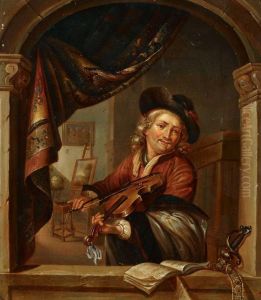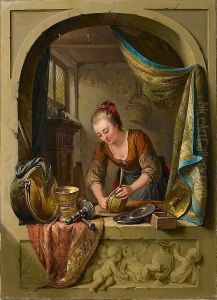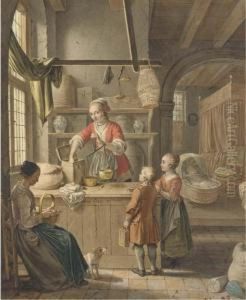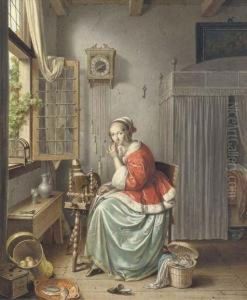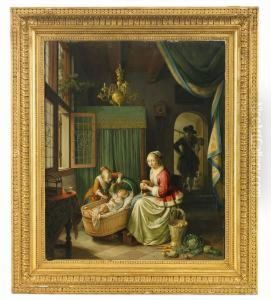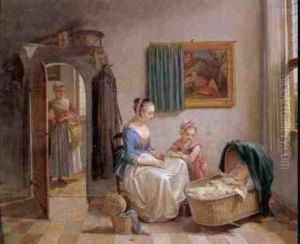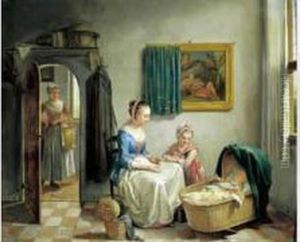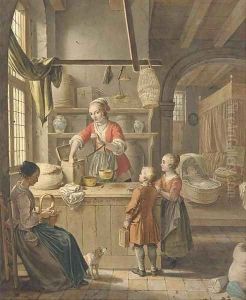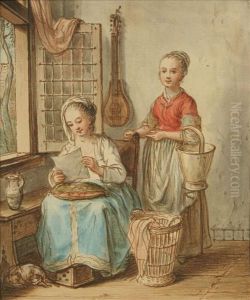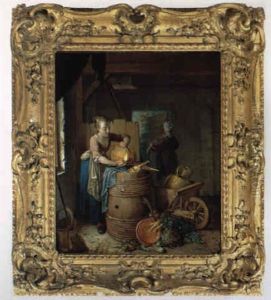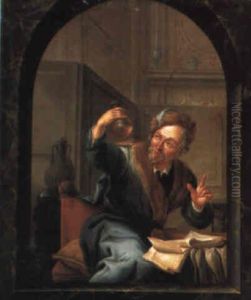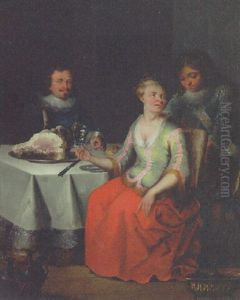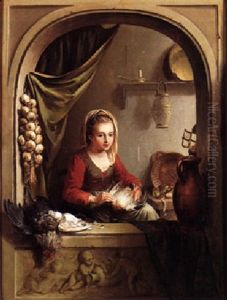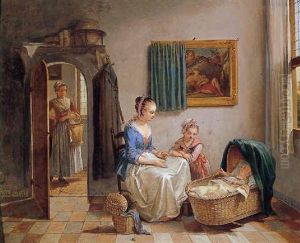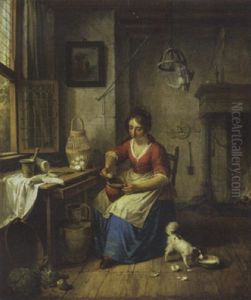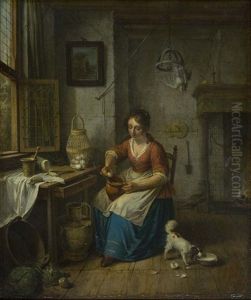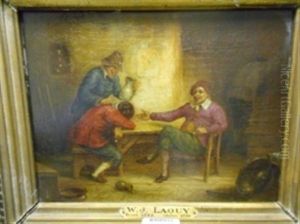Willem Joseph Laquy Paintings
Willem Joseph Laquy was a notable figure in the world of 18th and early 19th-century Dutch art, recognized primarily for his contributions as a painter. Born in 1761, Laquy's artistic journey began in an era marked by the transition from Rococo to Neoclassicism, reflecting the broader shifts in European art and culture during his lifetime.
Laquy's work is characterized by its detailed and precise style, often focusing on genres such as portraiture, genre scenes, and occasionally, animal studies. Despite the lack of extensive records on his education and training in art, it is evident from his works that Laquy possessed a profound understanding of the technical aspects of painting, coupled with a keen observation of human nature and everyday life.
Throughout his career, Laquy remained relatively active in the Dutch art scene, contributing to the artistic milieu of his time. However, unlike some of his contemporaries, Laquy did not gain widespread fame or recognition during his lifetime. His works were appreciated within certain circles but did not achieve the acclaim that some of his peers enjoyed.
Laquy's later years were marked by a continued dedication to his art, despite the changing tastes and trends in the European art world. He passed away in 1841, leaving behind a legacy that would only be fully appreciated posthumously. Today, Willem Joseph Laquy's paintings are valued for their historical significance and craftsmanship, providing insight into the artistic endeavors of the Dutch Golden Age's long tail.
His contributions, though not as widely celebrated as some of his contemporaries, have earned him a place in the annals of art history, particularly among scholars and enthusiasts of Dutch art. Laquy's work now serves as a testament to the diversity and depth of talent that existed during a pivotal period in European art, offering a window into the everyday life and artistic expression of his time.
